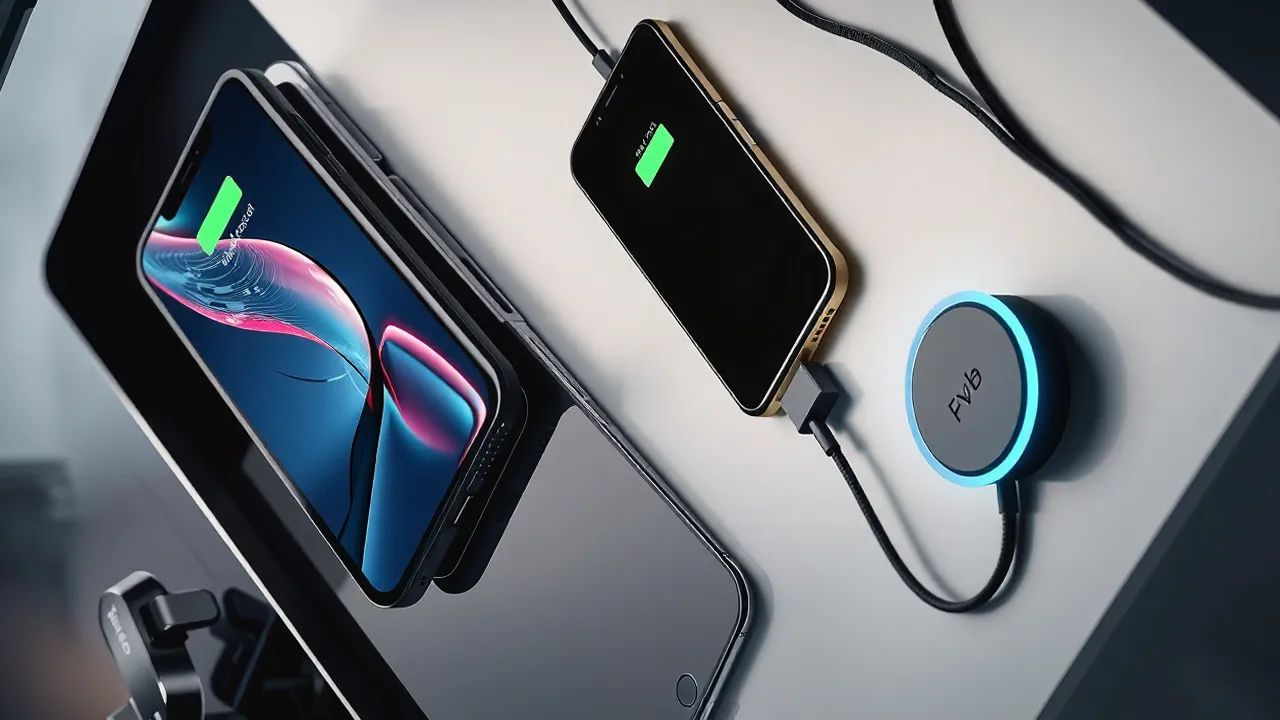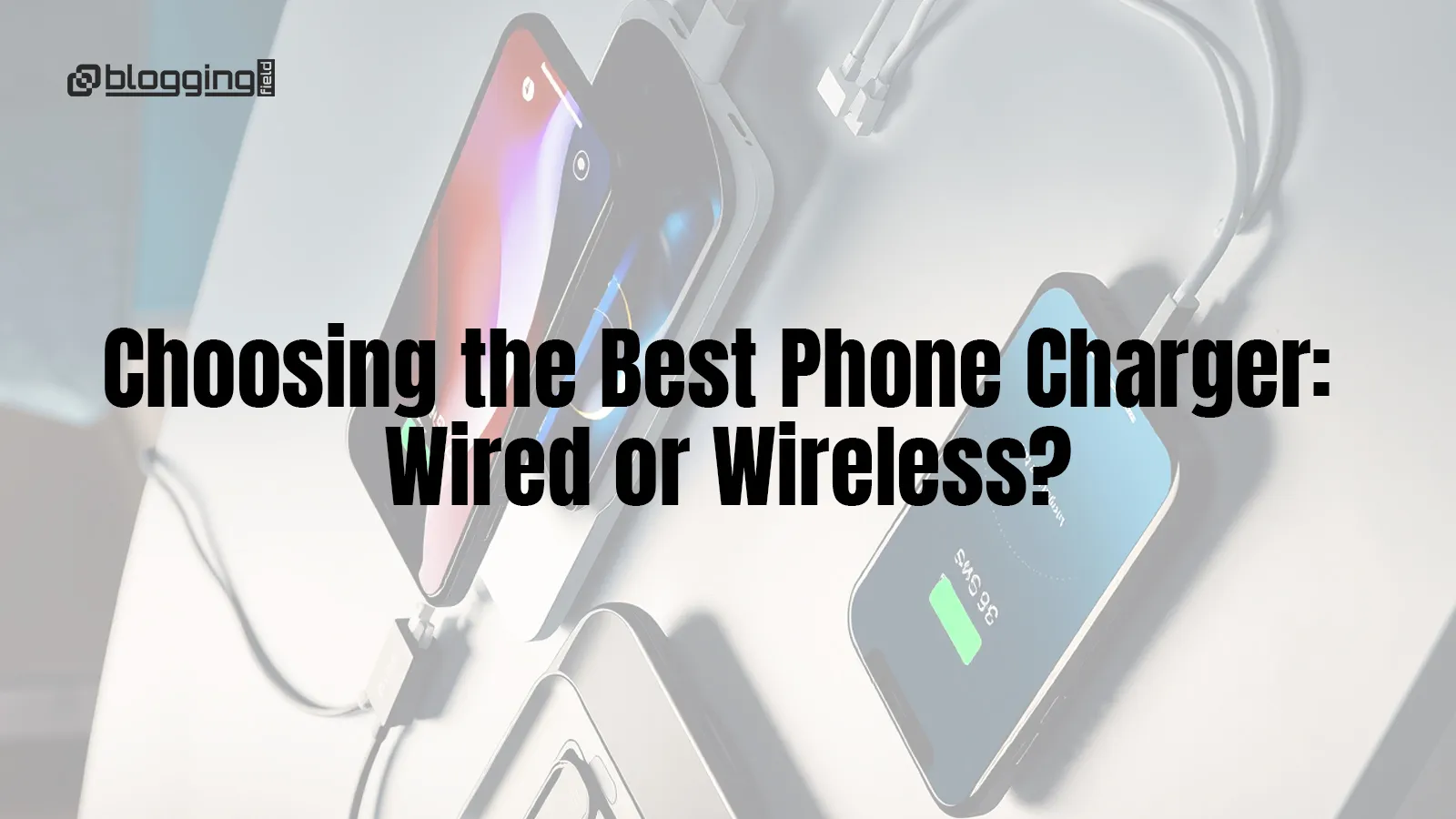Introduction
In today’s smartphone‑driven world, having a reliable charger is just as important as having a great phone. From fast wired chargers to sleek wireless pads, technology has evolved to offer multiple ways to power up your device. Choosing between a wired and wireless charger can be confusing. Wired chargers are known for speed and efficiency, while wireless chargers bring convenience and style. In this guide, we’ll dive into the pros, cons, and considerations to help you decide the best phone charger for your lifestyle.

Wired Phone Chargers – Speed and Reliability
Wired chargers have been the standard for years, offering consistent and fast charging speeds. With modern technologies like USB‑C Power Delivery (PD) and GaN fast chargers, wired charging can deliver up to 120W or more in 2025, charging some phones from 0 to 100% in under 30 minutes.
Advantages of Wired Chargers:
1. Faster Charging Speeds
Wired chargers provide the quickest charging performance, often 2‑3 times faster than wireless options. Modern USB‑C PD and GaN chargers can deliver 20W to 120W, allowing many phones to reach 50% charge in just 15‑20 minutes. This makes wired charging ideal for users who need instant power boosts during busy schedules.
2. More Affordable and Widely Available
Compared to wireless chargers, wired chargers are budget‑friendly and easily available in the market. From official chargers to third‑party options, you can find them at various price points. Their affordability makes it easy to buy multiple chargers for home, office, and travel use.
3. High Energy Efficiency
Wired charging has minimal power loss, meaning more electricity goes directly to charging your phone instead of being lost as heat. This efficiency not only speeds up the process but also ensures less heat generation, which helps maintain better battery health over time.
4. Universal Compatibility
Most wired chargers are universally compatible, supporting multiple devices through USB‑C, Micro‑USB, or Lightning cables. A single wired charger can often charge phones, tablets, earbuds, and even laptops, making it a versatile choice for all your gadgets.
Wireless Phone Chargers – Convenience and Modern Aesthetics
Wireless chargers are growing in popularity due to their cable‑free experience and stylish designs. Qi2 wireless charging in 2025 offers improved efficiency and magnetic alignment similar to Apple’s MagSafe and Android’s Qi2 pads. Simply place your phone on the pad, and it charges—no plugging required.
Advantages of Wireless Chargers:
1. Convenience and Ease of Use
Wireless chargers eliminate the hassle of plugging and unplugging cables. You simply place your phone on the charging pad or magnetic stand, and it starts charging automatically. This makes it perfect for quick drops and pickups, like at your bedside or office desk, without dealing with tangled cables.
2. Modern and Clutter‑Free Look
Wireless charging pads and stands offer a sleek, minimalist design that reduces desk or nightstand clutter. They also support multi‑device charging, letting you charge your phone, smartwatch, and earbuds simultaneously—creating a clean and organized setup.
3. Less Wear on Charging Ports
Since your phone doesn’t need to be plugged in repeatedly, wireless charging reduces wear and tear on the charging port. This can extend the life of your phone’s port, especially useful for devices with delicate USB‑C or Lightning connectors.
4. Multi‑Device Compatibility
Modern wireless chargers, especially Qi2‑certified models, can charge multiple devices like smartphones, earbuds, and smartwatches. This versatility makes them a great choice for users who own multiple gadgets and want one charger for all.
3. Wired vs Wireless: Which Should You Choose?
The choice depends on your priorities:
Speed & Efficiency: If you want the fastest charge possible, a wired fast charger is still the best option.
Convenience & Aesthetics: If you prefer a minimalist, cable‑free setup, wireless charging is ideal.
Travel & Portability: Wired chargers are lighter, smaller, and easier to pack for travel.
Battery Health: Both methods are generally safe with certified chargers, but wireless charging may generate more heat.
Conclusion
When it comes to choosing the best phone charger in 2025, your decision depends on speed versus convenience. Wired chargers remain the fastest, most efficient, and affordable choice. Wireless chargers excel in ease of use, modern aesthetics, and reducing wear on charging ports.
For most users, a hybrid approach works best: a fast wired charger for quick boosts and a wireless charging pad for everyday convenience. With proper certified chargers, both methods are safe and effective for keeping your phone powered up.
Frequently Asked Questions (FAQs)
Does wireless charging damage my phone battery?
No, certified wireless chargers are safe. However, wireless charging generates more heat, so using official or Qi2‑certified chargers is recommended to protect battery health.
Which is faster—wired or wireless charging?
Wired charging is generally 2‑3 times faster than wireless. Even the latest Qi2 wireless chargers max out around 30W, whereas wired chargers can exceed 100W.
Can I use wireless chargers with a phone case?
Yes, as long as the case is thin (under 3‑5 mm) or MagSafe/Qi2‑compatible. Thick cases or metal attachments can interfere with charging.










